Israel at War - What happened on day 31?
1,400 Israelis murdered since October 7, including 347 soldiers • 240 held hostage by Hamas, four hostages released, one rescued
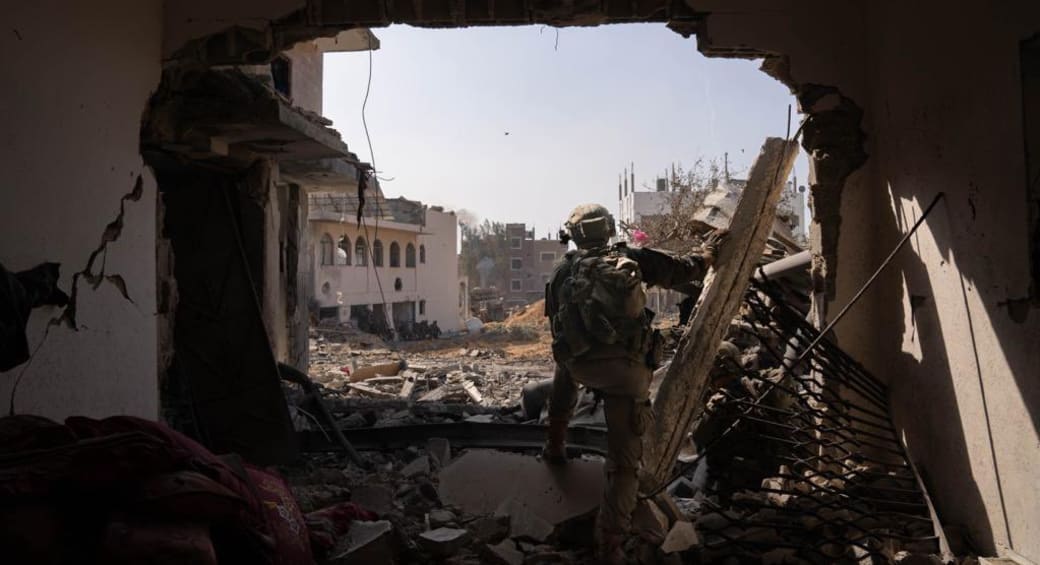

IDF takes out Hamas commander, Hamas claims destroyed Israeli tank
Wail Asfa was one of the commanders who ordered the invasion of Hamas terrorists into Israel.
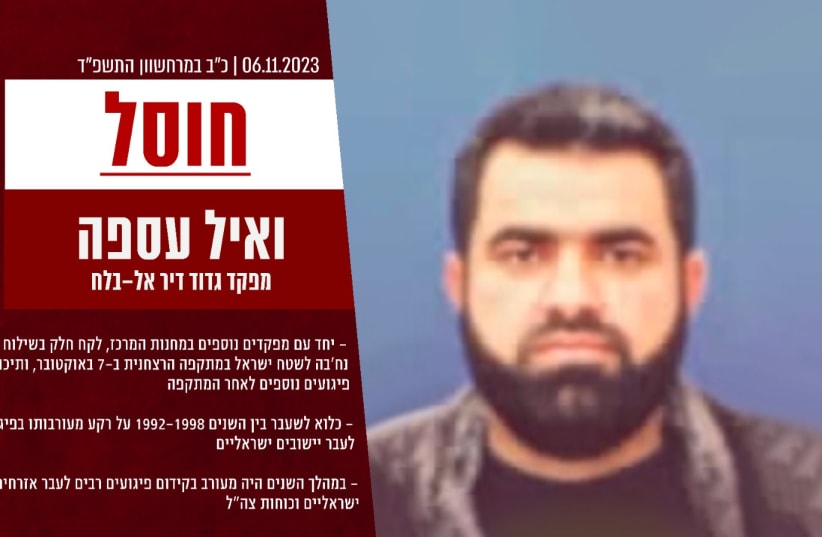
The commander of Hamas's Deir al-Balah Battalion of the Central Camps Brigade, Wail Asfa, was eliminated overnight on Sunday by an Israeli airstrike, the IDF and Shin Bet said on Monday.
The strike, which was conducted by an IAF fighter jet, operated on intelligence provided by the Shin Bet and Military Intelligence Directorate in carrying out the operation.
Go to the full article >>Israeli source says many hostages in Gaza are still alive
An Israeli diplomatic source said that the pressure of a ground campaign may press Hamas to make a deal.
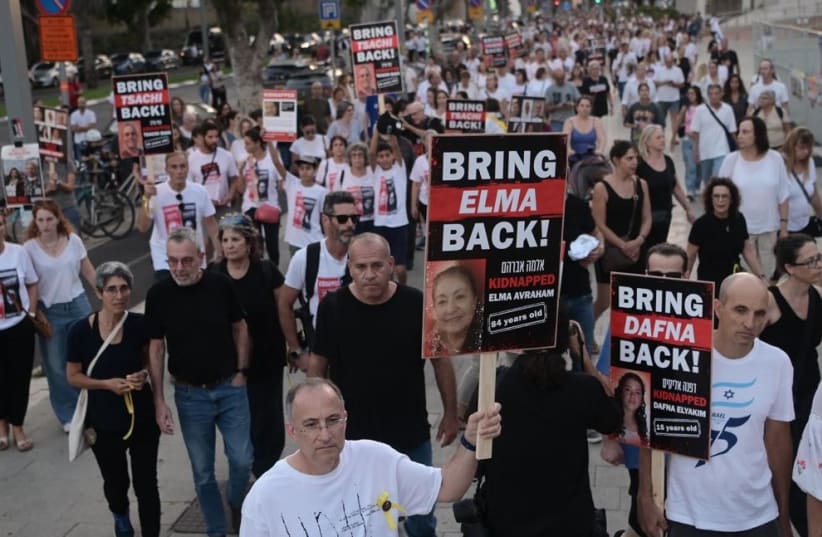
Israel has estimated that many of the over 240 Hamas-held captives in Gaza are still alive, as it opposed any ceasefire without the release of all the hostages.
An Israeli diplomatic source said that the pressure of a ground campaign may press the Gaza-based terrorist group to make a deal.
“Initially nothing was seen in that direction,” the source said. Now, “we see something,” but “it hasn't matured yet.”
The source spoke as Israel is under international pressure for a ceasefire, with US Secretary of State Antony Blinken pushing it to at least accept a humanitarian “pause” in the fighting.
The source said that any ceasefire understanding would in fact be temporary, more akin to a pause, adding that this could only happen in exchange for the release of the hostages and amid a clear understanding that Israel would continue to “work to defeat Hamas.”

Qatar's foreign ministry said on Sunday that without a "period of calm" in Gaza, its mediators would not be able to secure the release of Israeli hostages held there.
The source clarified that all Israeli contacts with Qatar are managed by Mossad Chief David Barnea, together with the intelligence team of IDF Maj.-Gen. (Res.) Nitzan Alon and Shin Bet (Israel Security Agency) Chief Ronen Bar.
All efforts being made by former Mossad chief Yossi Cohen are being done under the auspices of Barnea, as Cohen does not have a separate role, the source said, adding that “parallel actions can complicate the situation.”
His only sole independent effort was at the start of the war when he delivered a message to Prime Minister Benjamin Netanyahu from Arab leaders, the source explained.
IDF may remain in Gaza
Looking toward the aftermath of the Gaza War, the source hinted that the IDF may remain in Gaza.
“I don't see a situation where Israel will not have supreme security responsibility in Gaza,” the source stated. Work must also be done to change the mindset of Palestinian society there.
“It is not enough to restore Gaza. It must be put through a process of de-Nazification,” the source added.
The source noted that the problem was not limited to Gaza but also included the West Bank.
“This culture [of wanting to kill Jews] still exists in the Palestinian Authority, the source said, warning during the conversation that the West Bank settlements were in danger of Hamas attacks.
A Hamas victory, therefore, is also not just important for Gaza, but also for the West Bank and for Israel’s northern border, the source said.
The scope and strength of a victory over Hamas, would help ensure the security of the evacuated communities along Israel’s northern border, the source stated.
The possibility of a similar infiltration by Hezbollah along Israel’s northern border has also decreased because the IDF had now invested more forces to fortify the area, the source said, adding that the military also changed its operational understanding of what must be done to protect that border.
Looking to the future, the source said that an Israeli-Saudi normalization deal, which had been under negotiation prior to the outbreak of the Gaza War on October 7, was still visible, but emphasizing that this is only if Israel defeats Hamas.
Go to the full article >>Terrorist infrastructure blurs line between civilian and military targets
"When we received final approval from the IDF last Thursday to join the troops for a day, all my doubts dissipated," the author wrote.
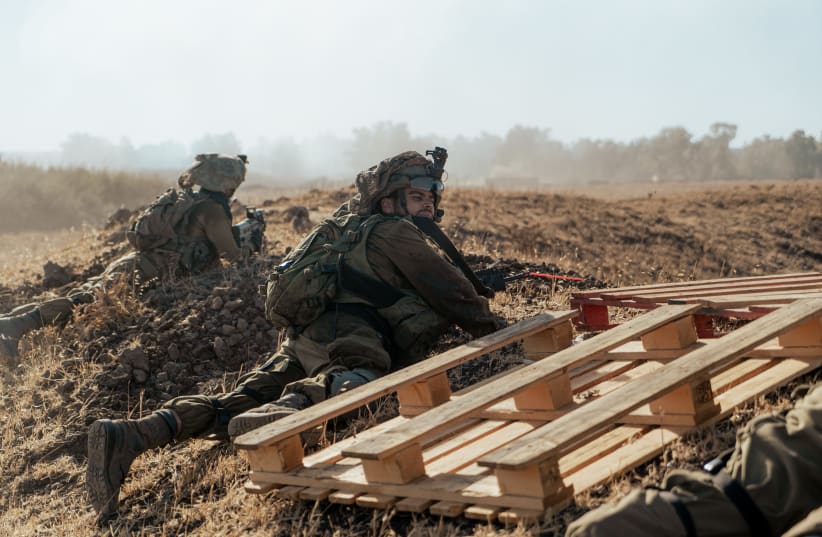
I have taken part in a few incursions into the Gaza Strip, but I have to admit that I have never been this scared. The intensity of the war, my family situation, including a son who’d been injured and undergone a long recovery, stirred up many conflicting thoughts. Yet when we received final approval from the IDF last Thursday to join the troops for a day, all my doubts dissipated.
By Friday, we were on our way down South to join up with the Negev Brigade, a reserve infantry brigade, as it traversed to Beit Hanun in the Gaza Strip.
Civilian communities on Gaza border turned into makeshift military bases
Immediately after the war broke out, many of the kibbutzim that border Gaza were turned into makeshift military bases, a different pace from previous military operations, where civilian activity mostly continued as usual. Today, barely any civilians remain in any of the communities.
“Up until October 7, we were reservists,” one soldier stationed in the area said. “Now, we are all soldiers. Some of the reserve units’ equipment was antiquated, but now we have everything we need.”
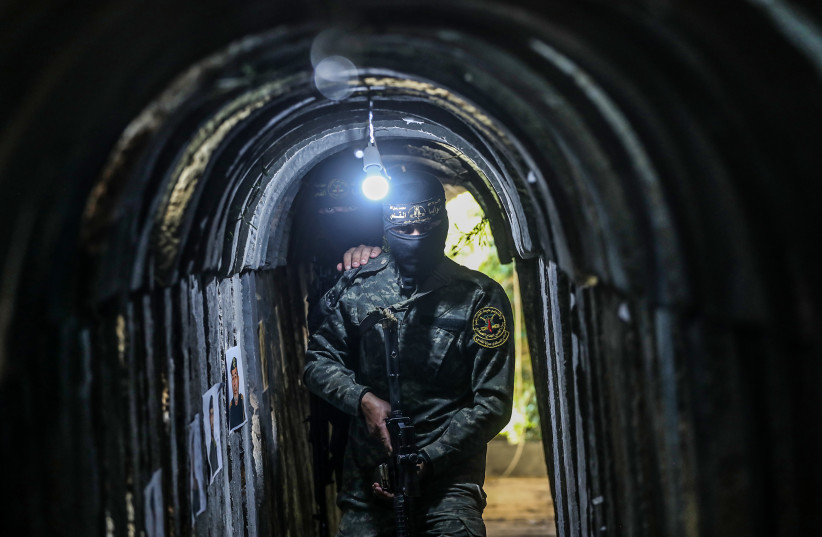
We were then informed that no journalists were being let in, since Southern Command Commander Maj.-Gen. Yaron Finkelstein needed the vehicle to meet with Negev Brigade Commander Ivri Elbaz in Beit Hanun, and view firsthand the enormous number of tunnels that were dug from inside residents’ homes and in fields. “Our troops always need to be on guard, since terrorists are always popping up from tunnels we have not yet identified and shooting at any soldiers,” another soldier added.
One of the soldiers from the Rotem Brigade and Sayeret Givati, the brigade’s reconnaissance company, said that one of their regiments stationed on the Israeli side of the border encountered Hamas terrorists a few times who were trying to infiltrate Israel through tunnels.
None of them succeeded, but this served as another example of the complexity of the war. Everywhere underground Gaza has been turned into a massive complex “metro,” making it that even if the IAF and ground forces succeed in destroying Hamas infrastructure above ground, the tunnels remain another front.
Shir, one of two female paramedics who were called up for reserve duty on October 7, was a border guard during her mandatory service, then trained to become a paramedic with Magen David Adom. She said “hopefully there won’t be too many casualties. We all have families back home waiting for us, some of us have kids. We sleep on the ground just like everybody else; it’s all part of the job.”
When the time came to finally enter Gaza, a last-minute briefing by security officials explained that we would be entering alongside a convoy of tanks and armored personnel carriers, so loud it is difficult to hear the commander.
The greatest concern, the officials explained, was coming under fire from anti-tank missiles fired by terrorists popping out of the tunnels, and quickly disappearing back underground. Dror Aharoni, 56, the driver of the nearby APC, stopped doing reserve duty 12 years ago.
He is not the only retired reservist who volunteered when the time came to drive a personnel carrier: “They needed experienced drivers, five of us volunteered. We know how to get the job done, we are going in and doing what we have to do.” The heavy carriers don’t move very fast, but Aharoni pressed down hard on the gas pedal to move as quickly as possible.
Remembering Bei Hanun
The main concern was coming under fire from anti-tank missiles, a common occurrence. As we began the drive to Beit Hanun, we passed an area I recalled from my service during operations Protective Edge in 2014, Cast Lead in 2008, and Summer Rains in 2006. Beit Hanun today looks nothing like it then.
We met Elbaz in one of the few buildings that remains more-or-less intact. Before October 7, more than 40,000 Palestinians lived in Beit Hanun; none remain now. During the window of time Israel gave Gazans to relocate to the southern part of the Strip, Hamas booby-trapped a large portion of these buildings.
As someone who served many years in Sayeret Givati, and fought in almost all of the operations in Gaza, Elbaz, 39, knows the area well. During Operation Hot Winter in 2008, as the assistant company commander of the Palsar Unit, which specializes in counterterrorism, intelligence, hand-to-hand combat, and tunnel warfare, Elbaz was wounded by friendly fire.
After recovering, he returned to service and was appointed commander of the reconnaissance battalion, currently one of the most experienced commanders in combat operations in the Gaza Strip. Agreeing that this war was certainly different from any previous operations, he spread out a map on the kitchen table of the home, and explained how the IDF is coordinating all of its combat operations, and marking the locations of tunnels uncovered so that as many as possible can be destroyed.
Climbing up the stairs, we were given a clear view of Netiv Ha’asara and the broken security border fence. A few days ago, a number of terrorists tried to breach the border using underground tunnels. Kibbutz Erez and the Ashkelon power station could also be seen from this vantage point, which clarified for me instantly how much information about the border the architects of the October 7 massacre had from just observing everything from here. You could see everything.
“From here, you can see all of the orchards that, until just a few weeks ago, were bursting with date, pomegranate, and olive trees,” explained Elbaz. “You passed by their destroyed remains on the way here today.”
A division commander began then to describe the incomprehensible network of tunnels uncovered underground that reach from Gaza to Israel. Elbaz estimated that 80% of the homes in Beit Hanun have some sort of terrorism-related infrastructure underneath, and were outfitted with explosive materials and booby-trapped in the days leading up to IDF’s ground invasion.
“In previous operations, there was a much clearer division between the civilian Gaza population and terrorists. But now, the extensive network of tunnels created by Hamas is like nothing we’ve ever seen before,” Elbaz concluded.
Translated by Hannah Hochner.
Go to the full article >>Israel-Hamas war: 5 challenges Israel faces after 30 days - analysis
Israel remains under constant rocket fire, still reeling from the trauma of October 7. Here are the five primary challenges it currently confronts, one month into the war with Hamas.
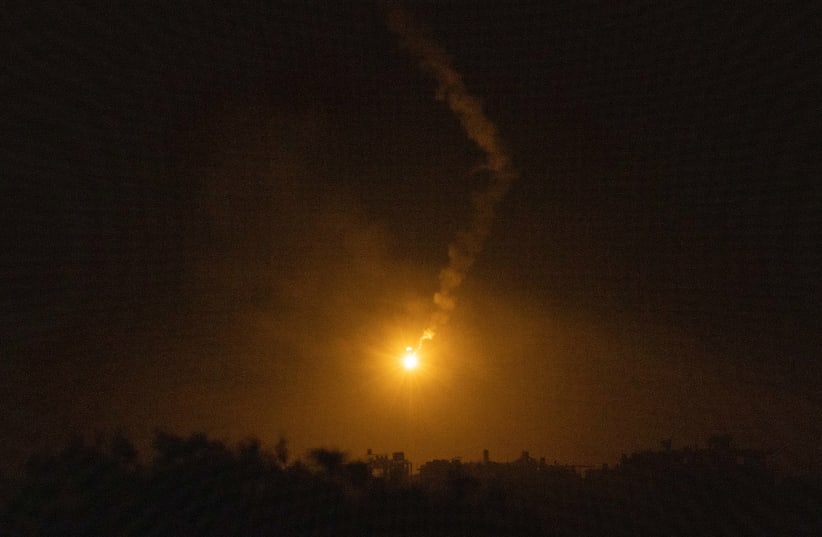
Thirty days after the Hamas infiltration, Israel finds itself entrenched in a Gaza conflict with no clear end in sight, all while IDF casualties continue to rise. The country remains under constant rocket fire, still reeling from the trauma of October 7.
Here are the five primary challenges it currently confronts:
No. 1: Diplomatic support is weakening
The day following Hamas’s infiltration into Israel and the tragic loss of 1,400 civilian lives, politicians from across the Western world expressed their condemnation. They vowed unwavering support for the State of Israel. But 30 days later, as Israel continues to strike Hamas, killing thousands of civilians, the field has grown quieter.
Most leaders who visited Israel during this period have returned to their respective countries and have yet to revisit.
US President Joe Biden, the first to condemn the tragedy, and Secretary of State Antony Blinken have initiated discussions on “humanitarian pauses,” a stance that runs counter to Prime Minister Benjamin Netanyahu’s position.
This shift in approach is influenced by mounting pressure from Muslim American voters who have expressed their intention to abstain from voting in the 2024 elections due to the president’s strong support for Israel following the tragedy.
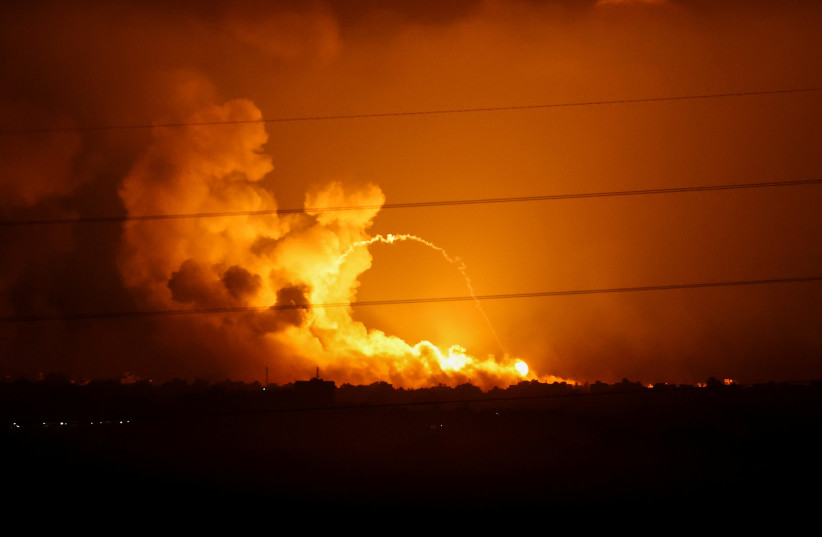
It is also because young American voters are more pro-Palestinian than pro-Israel. A recent Harvard CAPS/Harris Poll found that nearly half (48%) of young people say they side with Hamas rather than Israel in this conflict, and the same percentage say they strongly disapprove of Biden’s pro-Israel policy.
During a recent tour of the South, a German reporter asked MK Sharren Haskel if Israel was not “stuck on October 7, while in the Gaza Strip, people are dying every day.”
Israel faces frequent appeals from the United Nations for a humanitarian ceasefire as the memory of the events of October 7 recedes into the background of international consciousness and Hamas’s propaganda gains prominence.
No. 2: Antisemitism is reeling its ugly head
Since the massacre, there has been an unprecedented 1,200% increase in online calls for violence against Israel, Zionists, and Jews, according to a report released last month by the Antisemitism Cyber Monitoring System (ACMS).
A rabbi was murdered in front of her home in Detroit. A Jewish woman was stabbed in France – a swastika painted on her door. And a mob looking for Jews stormed a Russian airport. Now, Israel has warned its citizens against traveling abroad.
No. 3: The country is experiencing collective trauma
Even before Hamas infiltrated Israel, a study published in International Psychiatry found that as much as 27% of Jewish Israeli children in some areas of the country had been diagnosed with post-traumatic stress disorder. A 2021 study by Tel Aviv University and the Academic and Technology College of Tel-Hai showed that the level of personal resilience among citizens consistently decreased throughout the COVID pandemic and has continued to decrease – most significantly during Operation Guardian of the Walls, the 2021 Israel-Hamas conflict.
“This conflict will undoubtedly affect Israelis emotionally for decades and perhaps generations to come, placing a stamp of trauma, anger, and sadness, especially on those whose family and friends have been directly affected,” wrote Jerusalem Post health and science correspondent Judy Siegel-Itzkovich this week.
Col. Lucian Tatsa-Laur, an experienced psychiatrist who heads the IDF’s Department of Mental Health, told Siegel-Itzkovich that while only a minority of Israelis will develop full-blown PTSD, the majority will experience at least some symptoms of trauma from flashbacks and avoidance to hyper-arousal or engaging in risky behaviors.
No. 4: Israel faces an economic recession
Leading economists have forecasted that the Israeli economy is poised to slide into a recession as the conflict continues and more than 360,000 reservists who are currently called up for duty are diverted from their regular jobs.
Last week, a group of 300 senior economists issued a letter to Netanyahu and Finance Minister Bezalel Smotrich with an urgent plea for the immediate suspension of all nonessential expenses within the state budget and a comprehensive reassessment of spending priorities to effectively address the impending economic crisis.
“The severe blow inflicted on Israel [by Hamas and the Swords of Iron war] requires a fundamental change in the order of national priorities and a massive diversion of budgets to deal with the damage caused by the war, aid the victims, and rehabilitate the economy,” they wrote in their letter.
The Bank of Israel last month revised its growth projections for the current year and the following year, indicating that Israel’s economy is now projected to expand by 2.3% in 2023 and 2.8% in 2024 as a result of the repercussions of the war. These figures represent a downward adjustment from earlier estimates of 3% growth for both years.
No. 5: The nation is embroiled in an endless war
As Israel enters another week of its war with Hamas, there is no clear endgame.
Defense Minister Yoav Gallant said Saturday night that “at the end of the war, there will no longer be Hamas in Gaza, there will not be a security threat from the Gaza Strip to Israel, and Israel will have complete freedom of action to carry out any security actions it needs against anyone who [threatens us].”
This is a vision. It is not a strategy.
While the idea of “destroying Hamas” may sound appealing, the practicality of achieving this goal and the potential consequences remain unclear. Hamas is deeply intertwined with Gaza’s social and civilian life. Disbanding the organization would necessitate not only neutralizing its military wing but also dismantling its civilian infrastructure.
Moreover, Hamas employs tens of thousands of civilians in Gaza and enjoys support in large swaths of the West Bank.
Hamas holds more than 240 Israelis and foreign nationals as hostages in Gaza, and Israel has said it is committed to securing their release. While one cannot verify Hamas’s claims, the organization said Saturday that over 60 hostages were unaccounted for due to Israeli airstrikes in Gaza. If this assertion is accurate, an escalating ground invasion could jeopardize the lives of these hostages and complicate the achievement of this goal.
Finally, if Hamas was dismantled, what is to say there would not be another terror organization waiting in the wings, such as Palestinian Islamic Jihad?
As a senior Israeli diplomatic source said Sunday, it is likely that even after a victory, Israel will not have supreme security responsibility in Gaza.
Go to the full article >>Hamas planned for massacre during Passover, Iran forced delay - report
The report noted that the information was uncovered during the interrogation of Hamas terrorists who participated in the October 7 massacre.

Hamas's mass infiltration and massacre of Israelis on October 7 was originally intended to take place during last Passover's Seder meal, Israeli journalist Ben Caspit reported on Sunday evening.
As per the report, Iran decided to delay the organized assault on civilians to Simchat Torah due to reasons that are unclear. However, Caspit speculated, it could have been delayed due to informal negotiations with the United States which led to $6 billion being freed up for Iran in September.
The report noted that the information was uncovered during the interrogation of Hamas terrorists who participated in the October 7 massacre.
Israeli report: October 7 was chosen due to Yom Kippur war anniversary
Further, Caspit reported that the October 7 date was chosen partly due to its proximity to the 50th anniversary of the Yom Kippur War.
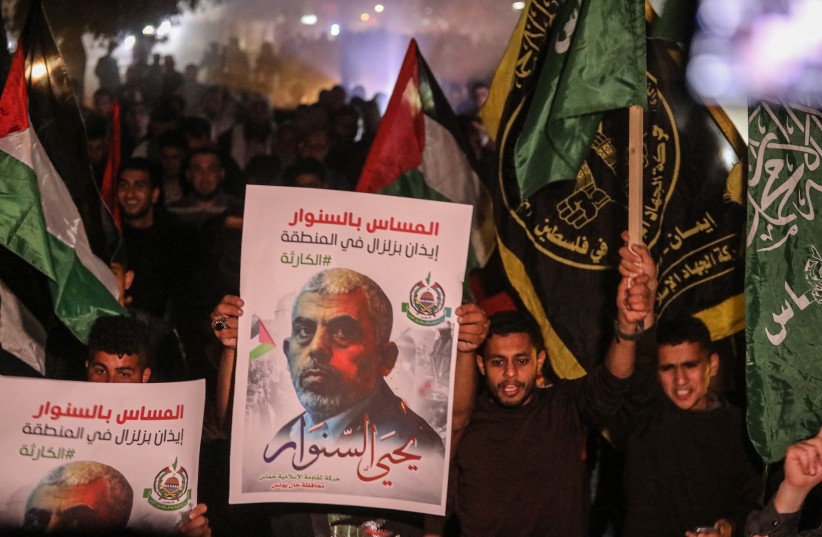
Caspit did note that the information "might not have reached decision-makers or passed a validity test.
"But it did reach the ears of interrogators," Caspit said.
Go to the full article >>Israel-Hamas War: What you need to know
- Hamas launched a barrage of rockets on October 7, with thousands of terrorists infiltrating from the Gaza border
- Over 1,400 Israelis and foreign nationals were murdered as of Sunday afternoon, and more than 5,431 were wounded according to the Health Ministry
- IDF: 240 families of Israeli captives in Gaza have been contacted, 30 of them children